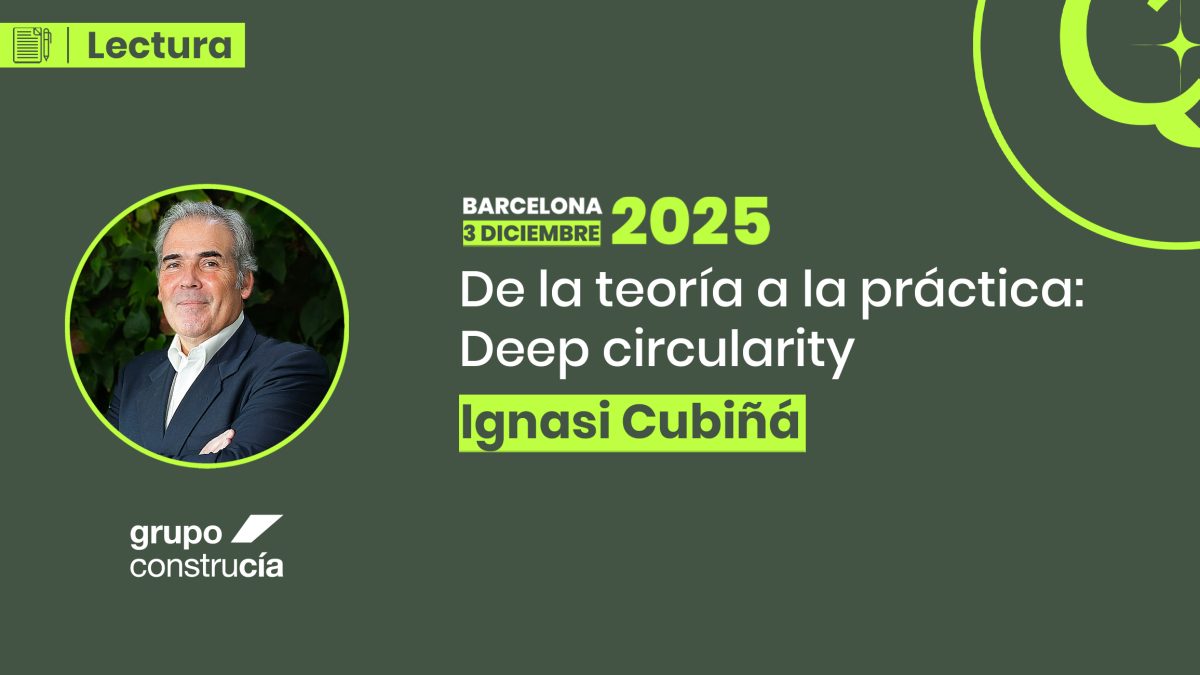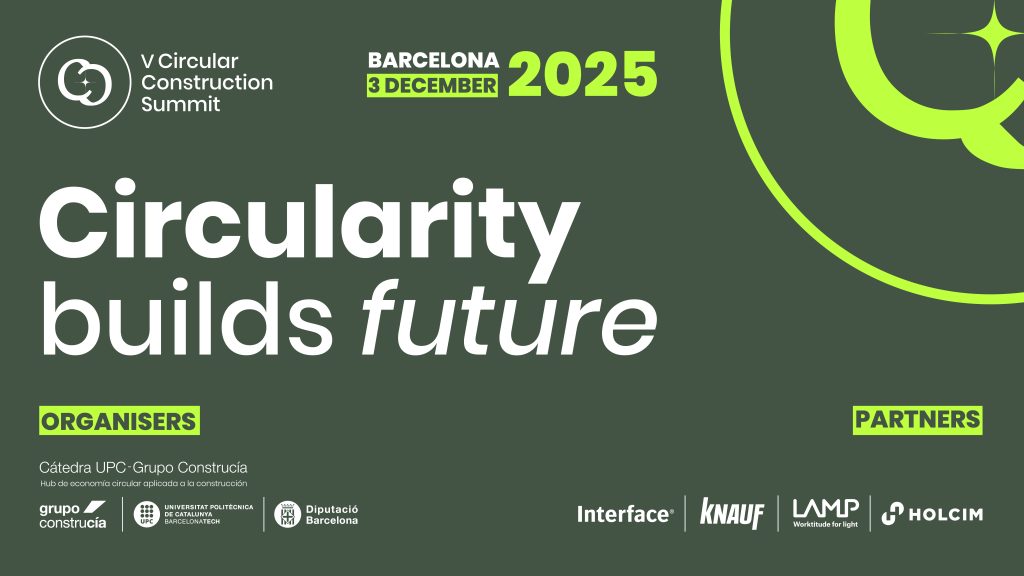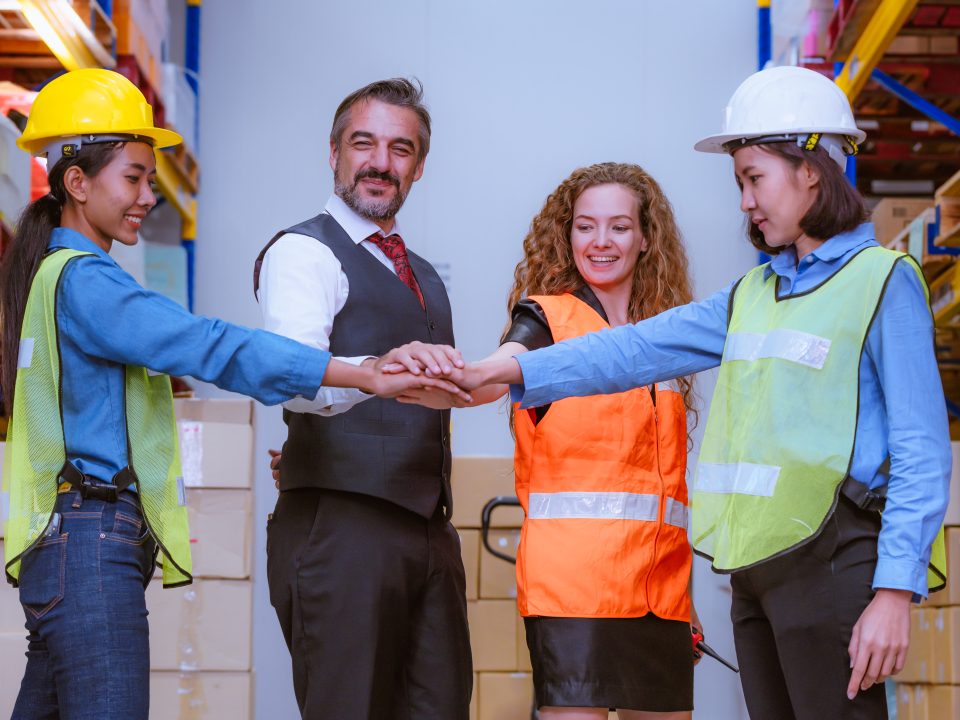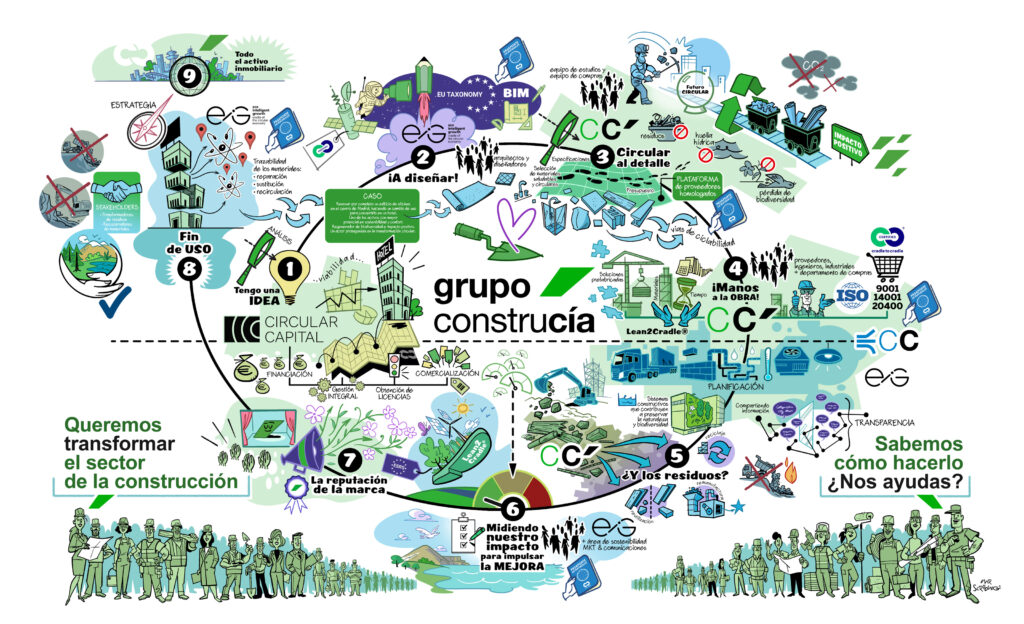
Circular Construction: Cities as Quarries for the Future
3 de November de 2025By Ignasi Cubiñá, Partner at Grupo Construcía and Co-founder of EIG
We are just a few weeks away from the 5th Circular Construction Summit, once again promoted by Grupo Construcía—this time with growing support from institutions and companies. The theme for this edition is “Circularity Builds Future.” It’s a simple wordplay between Circularity and Construction—nothing that requires expertise in semiotics—and yet it conveys a clear message: building the future.
A few minutes ago, I was reading a reference by historian Jean-Baptiste Fressoz, author of Sans Transition. Une nouvelle histoire de l’énergie, about a 1982 lecture by Edward David, then Director of R&D at Exxon. The talk was titled Inventing the Future. In that lecture, David stated that “everyone knows we have entered an energy transition.”
More than 40 years have passed, and as Fressoz points out, that energy transition has not truly taken place. The inertia of a fossil-fuel-based model has proven far stronger than experts anticipated.
In my view—and I believe Fressoz hints at this as well—this lack of progress is connected to something deeper: a material transition and a lifestyle transition that have not happened either.
The link between materials, energy (and water, of course) requires no explanation. But how these are managed in a linear system (extract, use, discard) is entirely different from how they would operate in a circular economy.
It is not just about eliminating waste from material, energy, economic, and social flows; it is about shifting towards a different relational model, one based on trust (collaborative relationships) rather than power (hierarchy and competitiveness within the construction sector, in this case), which has been the norm until now.
Contemporary Circular Economy—the one we are attempting to develop today in a context very different from that of past centuries—does not seem to be achieving the level of relevance expected, not even in Europe. This is despite a geopolitical context that should, in theory, favor it: what some northern European countries call the pursuit of strategic self-sufficiency.
Perhaps Circular Construction is facing the same challenge… or maybe not.
In recent months, I’ve had the sense that a movement in Circular Construction is growing under the radar, focusing on recovering materials from the built environment.
I’m referring to the direct reuse of materials—such as concrete or steel structures in new buildings—the transformation of structural elements into secondary raw materials, both on-site and off-site. Circular deconstruction (dismantling without destroying) and the characterization of materials with functional and environmental guarantees to enable their future reuse.
All these initiatives reveal a reality that differs from what we might perceive at first glance—or from what official statistics reflect. Most importantly, in my view, they respond to three essential vectors for a construction sector aiming to become predominantly regenerative rather than extractive:
- Social Vector : New skills and disciplines are emerging, attracting new professional profiles and more disruptive talent. Characterizing and qualifying materials in the built environment demands skills that have been gradually lost in recent decades.
- Innovation Vector : Innovation is not just digitalization. It goes much further. The growing volume of data generated by circular processes not only requires data analysis tools, but also intrinsic knowledge of the physical, chemical, and biological properties of materials, and their relationship with the broader system and all the professions within it. Artificial intelligence should support people—human-centric, not a goal in itself or a substitute for knowledge or experience. In short, AI scaled to humans, not corporations.
- Financial Vector: We need a shared language with the financial sector—banks, investors, insurers, asset managers, bond issuers—that accurately captures the real, tangible economic value of Circular Construction, including both risks and, above all, opportunities. We are making progress—but we must accelerate.
As I’ve said on other occasions, our society oscillates between two visions: A technocentric one—promoted by certain centers of power—based on solutions that tend to be exclusionary; and another that seeks balance between technological development, innovation (in all its forms, not only technological), and social inclusion, both here and elsewhere.
Deep Circular Construction (Deep Circularity) belongs to this second vision. Its aim is to regenerate nature by relieving the pressure exerted by a predominantly extractive industry and replacing it with an increasingly regenerative one.
This transformation is essential to achieving a net positive impact: both mitigation and adaptation to climate change—and all other indicators linked to planetary boundaries—depend on restoring a much healthier state of nature and biodiversity than we currently have.
Deep Circular Construction has much to contribute in all contexts—urban and rural, in the Global North and the Global South, in heavily industrialized regions and those still developing.
The challenge ahead is not only to apply circular economy principles, but to understand them deeply: how they reshape the way we build, collaborate, and create value.
That is precisely what we will discuss at the 5th Circular Construction Summit, to be held on December 3 in Barcelona: how to move from theory to practice in Deep Circularity.
Are you interested? We invite you to join the circular construction movement. Whether you’re part of the industry, the financial sector, the public sphere, or simply someone committed to the future of your city, your role is essential.
Take part in the #CircularConstructionSummit2025










